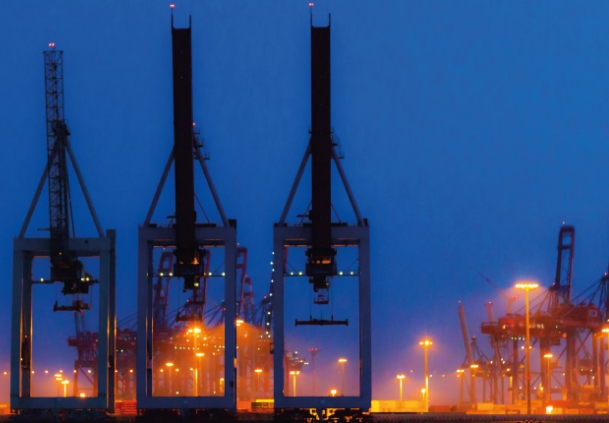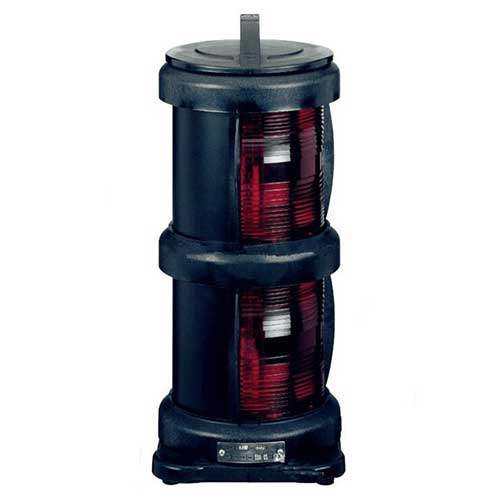Marine installations, from ships to offshore platforms, rely heavily on lighting systems to ensure safety, navigation, and operational efficiency amidst the harsh conditions of the open seas. Crafting effective solutions for marine lighting demands a unique blend of considerations and innovative designs.

1. Safety at Sea: Lighting serves as a beacon of safety in maritime operations. Navigation lights guide vessels through hazardous waters, marking safe passage and warning nearby ships of their presence. This is particularly critical in low visibility conditions like fog or darkness, where lights on lighthouses, buoys, and beacons help prevent collisions and groundings.
2. Navigation and Positioning: Marine lighting aids navigation by providing visual cues for determining a vessel's position, course, and heading. From channel markers to port lights, these aids guide ships into harbors and through narrow channels, ensuring safe passage and smooth maritime traffic flow.

3. Operational Efficiency: Well-lit cargo handling areas, container terminals, and dockyards are essential for efficient loading and unloading operations in ports and shipyards. Additionally, illuminated workspaces and equipment on ships and offshore facilities enhance productivity and safety for crew members performing maintenance, repair, and inspection tasks.
4. Emergency Preparedness: Lighting systems play a crucial role in signaling for help and guiding rescue efforts during emergencies at sea. Emergency lighting, including distress signals and illuminated escape routes, provides vital visibility and guidance during power outages, fires, or other onboard crises, ensuring the safety of passengers and crew.
5. Crew Comfort and Well-being: Adequate illumination in living quarters, mess halls, and recreational areas contributes to the comfort and well-being of crew members onboard ships and marine installations. Additionally, lighting that mimics natural daylight cycles helps regulate circadian rhythms, improve sleep patterns, and reduce fatigue among crew members, promoting overall health and productivity.
Challenges of Lighting in Marine Installations:
Corrosion and Saltwater Exposure: Lighting fixtures in marine environments are prone to corrosion due to exposure to saltwater and saline air. Corrosion-resistant materials and coatings are essential to prolonging the lifespan of fixtures and maintaining functionality in corrosive conditions.
Vibration and Shock: Constant motion, vibration, and shock from waves and engine operations can compromise the stability and integrity of lighting fixtures. Shock-resistant designs and secure mounting mechanisms help mitigate the effects of motion and ensure reliability onboard vessels and marine structures.
Regulatory Compliance: Marine lighting must comply with stringent regulations and standards established by maritime organizations and national authorities. Meeting regulatory requirements entails thorough testing, certification, and adherence to specific guidelines, adding complexity to the design and implementation of lighting systems.
Harsh Environmental Conditions: Extreme weather conditions, including high winds, temperature fluctuations, salt spray, and UV radiation, pose challenges for lighting fixtures in marine environments. Weatherproof designs and UV-resistant coatings protect fixtures from environmental damage and ensure reliable operation in challenging conditions.
Maintenance and Accessibility: Maintenance of lighting systems in remote marine installations can be challenging due to limited access and logistical constraints. Designing systems with modular components and remote monitoring capabilities facilitates maintenance tasks and minimizes downtime.

Innovative Solutions for Lighting in Marine Installations:
LED Technology: LED lighting offers energy efficiency, durability, and resistance to shock and vibration, making it ideal for marine applications.
Modular and Adaptive Designs: Modular lighting systems with interchangeable components and adaptive controls optimize energy usage and facilitate maintenance in marine environments.
Corrosion-Resistant Materials: Utilizing corrosion-resistant materials and coatings extends the lifespan of lighting fixtures in corrosive marine environments.
Solar-Powered Lighting: Solar-powered lighting solutions provide sustainable illumination for remote or off-grid marine installations, reducing reliance on fossil fuels.
Smart Lighting Controls: Integration of smart controls enables real-time monitoring, scheduling, and optimization of lighting systems in marine installations.
Future Trends of Lighting in Marine Installations:
Integration of Renewable Energy: Solar and wind-powered lighting solutions offer sustainable alternatives for remote marine installations.
Advanced Materials and Coatings: Innovations in materials science continue to enhance durability and resistance to corrosion in marine lighting fixtures.
Human-Centric Lighting Design: Human-centric lighting design improves crew well-being and productivity through dynamic lighting controls.
Artificial Intelligence and IoT Integration: AI and IoT technologies enable intelligent monitoring, control, and optimization of lighting systems in marine installations.
In conclusion, lighting plays a vital role in ensuring safety, efficiency, and comfort in marine environments. By addressing the challenges and embracing innovative solutions, the future of lighting in marine installations holds promise for safer, more efficient, and sustainable maritime operations.